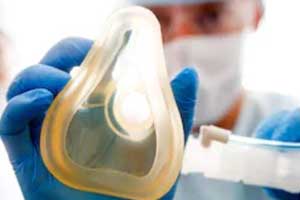- Home
- Editorial
- News
- Practice Guidelines
- Anesthesiology Guidelines
- Cancer Guidelines
- Cardiac Sciences Guidelines
- Critical Care Guidelines
- Dentistry Guidelines
- Dermatology Guidelines
- Diabetes and Endo Guidelines
- Diagnostics Guidelines
- ENT Guidelines
- Featured Practice Guidelines
- Gastroenterology Guidelines
- Geriatrics Guidelines
- Medicine Guidelines
- Nephrology Guidelines
- Neurosciences Guidelines
- Obs and Gynae Guidelines
- Ophthalmology Guidelines
- Orthopaedics Guidelines
- Paediatrics Guidelines
- Psychiatry Guidelines
- Pulmonology Guidelines
- Radiology Guidelines
- Surgery Guidelines
- Urology Guidelines
Oxymetazoline induces post op high BP in child - case report

Nasal decongestant oxymetazoline may induce post-op hypertension in a pediatric patient a case report of 3-year-old child corroborates it when he developed high BP after the application of oxymetazoline nasal packing following inferior turbinate reduction. The case was published in the Pediatric Anesthesia and Critical Care Journal.
Nasal decongestants are vasoconstrictors that belong to the pharmacologic class sympathomimetic amines. They exert their primary action by activating alpha-adrenergic receptors on blood vessels of the nasal mucosa. They should be avoided in patients of hypertension.
According to history, a 3-year-old, 14-kilogram boy presented with chronic nasal obstruction secondary to inferior turbinate and adenoidal hypertrophy. The child was admitted on the morning of the surgery for bilateral resection of the inferior turbinates and adenoidectomy. Anaesthesia was induced with the inhalation of 8% sevoflurane in oxygen. Following inhalation induction, a 20 gauge peripheral intravenous cannula was inserted and propofol (40 mg) was administered to facilitate intubation of the trachea with a 4.0 mm cuffed endotracheal tube.
A bilateral inferior turbinate reduction was performed by coblation® followed by out-fracturing of the turbinates. There was minimal bleeding following turbinate reduction and oxymetazoline (Afrin®) soaked pledgets were placed in both nostrils. Adenoidectomy was performed using electrocautery and hemostasis was augmented with topical application of oxymetazoline. As per the usual practice, the volume of oxymetazoline was not measured. After ensuring that there was no active bleeding, an oxymetazoline-soaked pledget was placed in both of the nares.
Immediately following the placement of the pledgets, the blood pressure was 104/67 mmHg with a heart rate of 78 beats/minute. The child was then transferred to the post-anaesthesia care unit (PACU) with continuous pulse oximetry monitoring and 100% oxygen delivered via bag and mask ventilation through the endotracheal tube. On arrival to the PACU, bradycardia was noted with a heart rate of 48 beats/minute. The blood pressure was 106/84 mmHg. Bilateral breath sounds were confirmed by auscultation.
Atropine (0.1 mg) was administered intravenously, following which the heart rate increased to 135 beats/minute and the BP increased to 166/129 mmHg. The oxymetazoline-soaked nasal pledgets were removed immediately and 10 mg of propofol was administered. Hypertension persisted and propofol was given in incremental doses of 10 mg each. Since no direct-acting vasodilators (hydralazine) were immediately available in the free-standing outpatient surgery centre, labetalol was administered in 1 mg intravenous increments to a total of 2 mg.
Blood pressure and heart rate remained elevated, but at a lower range of 124-98/69-88 mmHg and 111-128 beats/minute respectively. Over the ensuing hour, the heart rate and the blood pressure gradually normalized to 111 beats/minute and 106/70 mmHg respectively. The child’s trachea was extubated and the remainder of his postoperative course was uncomplicated. No further hypertension was noted during his PACU stay or after discharge during follow-up with his paediatrician.
For more details click on the link: http://www.anestesiarianimazione.com

Disclaimer: This site is primarily intended for healthcare professionals. Any content/information on this website does not replace the advice of medical and/or health professionals and should not be construed as medical/diagnostic advice/endorsement or prescription. Use of this site is subject to our terms of use, privacy policy, advertisement policy. © 2020 Minerva Medical Treatment Pvt Ltd